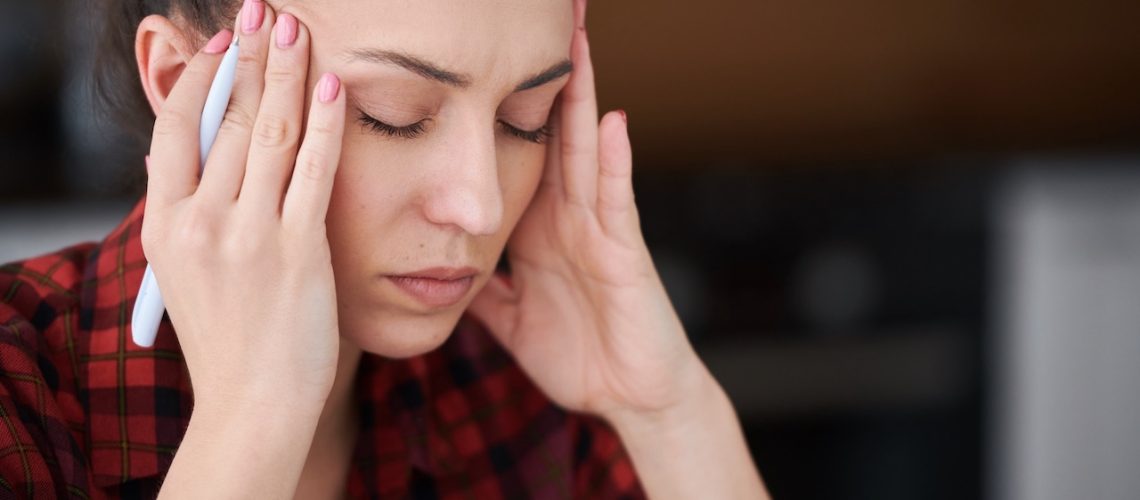Can’t seem to get rid of a nagging headache? In the midst of a nasty migraine?
Don’t reach for the ibuprofen quite yet…
A recent study examined 30 migraine-prone individuals who struggled with chronic headaches and measured the effectiveness of a new, natural intervention to relieve headaches.
The researchers began by asking patients to rate their headache symptoms on a scale of 0 to 10, with zero being experiencing no symptoms or pain, and ten being experiencing intense and debilitating pain.
The mean score, to begin with, was a second 7-out-of-10, or, in other words, a pretty painful headache (if you struggle with chronic migraines or headaches, you probably know the feeling).
By the end of a simple four-day intervention, the mean score dropped to a staggering zero out of ten, with no drugs, surgeries, or botox involved… But how?
Simple Breathwork Technique Found to Alleviate Headaches & Migraines
The miracle intervention in question was… Drumroll, please… Breathwork.
The researchers taught patients a simple breathing technique, which consisted of a full inhalation using the belly, followed by a brief breath-hold and a slow exhale through the mouth.
But after taking a closer look at the research, it’s no surprise that this technique was found to be such an effective counter to headaches.
Why Breathwork Can Relieve Headaches
It’s been speculated that there is a link between hypertension, or high blood pressure, and headaches. This is where we get the term “tension headaches” from.
Additionally, there is evidence to suggest that stress, and the hormones that follow it, including adrenaline and cortisol, may have an impact on headaches as well.
So, it makes sense that something that has a positive impact on blood pressure and stress would have a positive impact on headaches as well, right?
Well, there’s an established correlation between deep, slow, diaphragmatic breathing exercises and an acute decrease in blood pressure and stress.
This means that slow breathing techniques (like the one in the experiment) are likely to stop at least two of the potential root causes of headaches and migraines – hypertension and stress – from taking hold in the first place.
Other Benefits of Slowed Breathing
While the sample size of the study was relatively small at just 30 people, there are dozens of other studies that confirm the benefits of slow, deep, diaphragmatic breathing.
Research suggests that slower breathing speeds activate the vagus nerve, the body’s primary parasympathetic, rest-and-digest nerve, which has a wide array of benefits, including:
- Improved sleep quality
- More resources allocated to digestion
- Increased immune function
- Decreased stress & anxiety
- Subjective feelings of calm and tranquility
As an added benefit, brief breath holds and elongated exhales also lead to an increase in carbon dioxide in the bloodstream. This may sound like a bad thing, but in reality, carbon dioxide is a necessary and potent vasodilator, meaning it widens blood vessels and increases blood flow. In turn, this decreases blood pressure and increases blood flow.
More Breathing Tips for Headaches & Migraines
Engage diaphragm: Imagine taking breaths into your lower back
We suggest that you breathe mainly using the diaphragm while performing any breathwork or meditation exercise. This will lead to an increase in vagus nerve activity, which will decrease stress, one potential cause of headaches.
In the beginning, you might be confused, or not be able to “feel” the body enough to consciously engage the diaphragm. We have just the trick: try thinking about breathing into your lower back.
It will naturally trigger the use of your abdomen and 360° of your lower ribs, shifting your breath to the diaphragm rather than the upper chest.
Release the tension on each exhale
It may help to imagine releasing any tension, tightness, or strain in the forehead on each exhale. On the inhale, bring gentle awareness to the sensations of the head, and on the exhale, as the breath leaves the body, imagine this pain leaving the body as air exits the lungs.
Just let it go
Sometimes you may find it difficult to prolong your exhalation for more than 4 or 5 seconds. We recommend that you stop trying to force long exhales, especially while performing techniques that aim at relaxation. It will be much more relaxing to end the exhalation naturally, even if it’s a few seconds early.
Forcing the breath will only turn a relaxing exercise into an annoying exercise. Instead, just let it go. Breathe out smoothly and naturally, without unnecessary effort.




